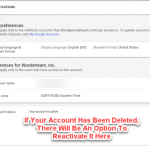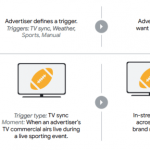Google Drives In-Store Foot Traffic Through Online Affiliate Location Extensions
by Laurie Sullivan@lauriesullivan, October 20, 2016
Google introduced Thursday affiliate location extensions in AdWords to help manufacturers drive customers to retail locations that sell their products through online ads.

Affiliate location extensions can help consumers searching for electronics, for example, find the nearest retail chains where they can buy the product. Promoting retail locations in search ads will make them more actionable and will give consumers relevant local information to drive store visits and sales, according to Google.
When someone does a “near me” search on google.com for a curved screen TV, for example, the ad serves up with the affiliate location extension. The person searching for the product sees the nearest store in the search results that sells it, either as an address or on a map. One tap on the screen of the mobile device give the consumer direction on how to get to the store location.
Google plans to roll out the service to U.S. advertisers within the next two weeks.
To set up extensions in AdWords, choose the new “Affiliate location extensions” option in the Ad extensions tab, select the retail chains where your products are sold, and Google will take care of the rest.
There is no need to link to a Google My Business account. Some advertisers may also be eligible for store visits data to help measure the impact of campaigns on offline store activity, according to Google.
Google has been on a quest to connect consumers viewing online ads to in-store sales and foot traffic. On Wednesday Google introduced the ability to apply business data in DoubleClick Search to marketing campaigns.
If there is an aspect of the business to surface in reporting, the marketer can create a new business table for it in DoubleClick Search. If the marketer is promoting an airline and wants to see the data for a specific airport that consumers are searching for, the user can create a business data table continuing “airport” and then apply the business data to the campaign. The region and country also can be added.
MediaPost.com: Search Marketing Daily
(20)













